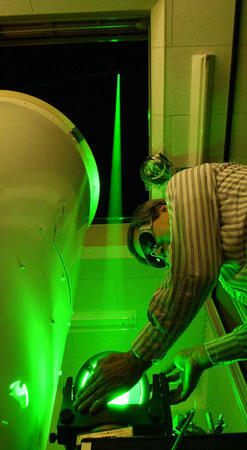 In an annual rite of spring, scientists in Japan carefully monitor the atmosphere for yellow dust. Also known as Asian dust, yellow sand or yellow wind, yellow dust is a phenomenon in which strong seasonal winds kick up giant clouds of fine Gobi desert sand. The dust clouds travel eastward, affecting air quality in China, Korea and Japan, and occasionally the continental US.
In an annual rite of spring, scientists in Japan carefully monitor the atmosphere for yellow dust. Also known as Asian dust, yellow sand or yellow wind, yellow dust is a phenomenon in which strong seasonal winds kick up giant clouds of fine Gobi desert sand. The dust clouds travel eastward, affecting air quality in China, Korea and Japan, and occasionally the continental US.
Japan's Meteorological Research Institute uses a remote sensing technique known as aerosol LIDAR (light detection and ranging) to monitor the status of the atmosphere and measure phenomena such as yellow dust. When weather conditions permit, a green laser beam is shot into the night sky from a small prefab structure belonging to the institute. The laser light is partly backscattered as it strikes particles floating as high as 40 km (25 miles) in the atmosphere, and the strength and timing of the reflected signals allows observers on the ground to analyze the particle content of the air.
On the night of April 17, the Omaezaki weather station in Shizuoka prefecture confirmed the presence of yellow dust in the atmosphere.
[Source: Yomiuri Shimbun]

No Comments